(31651 products available)































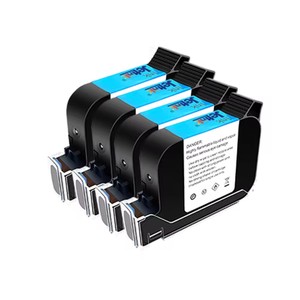
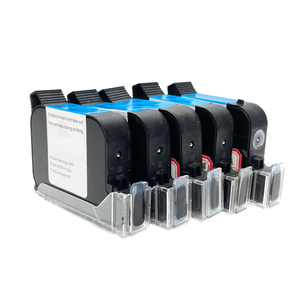






























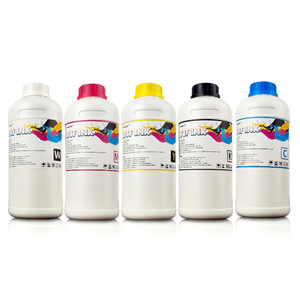

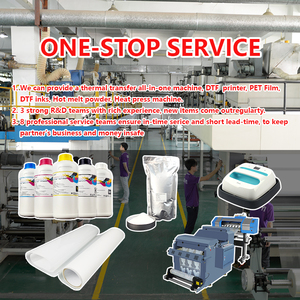




















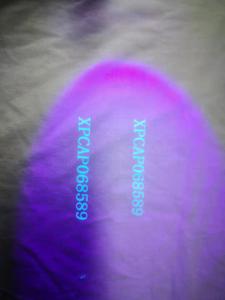
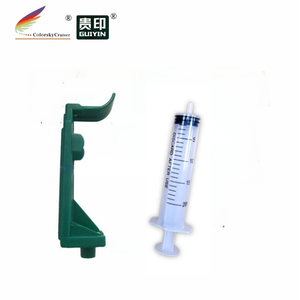













































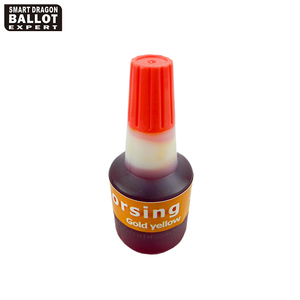









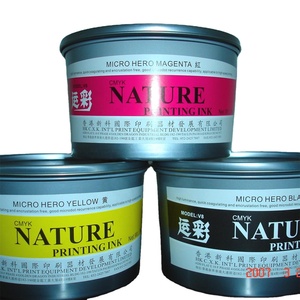

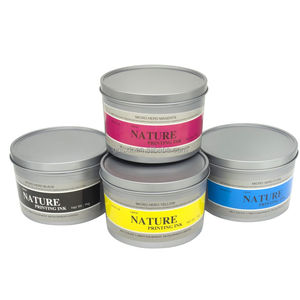
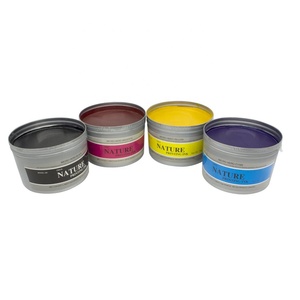
















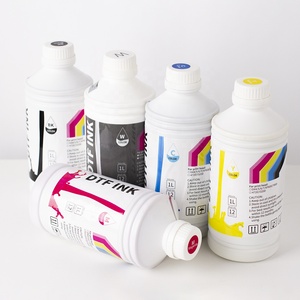

































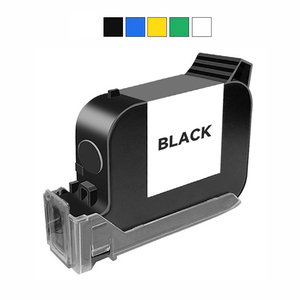





















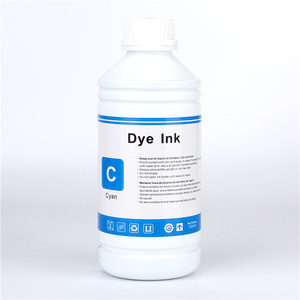








Solvent-Based Inks
Among the popular types of quick dry printing inkare the solvent-based inks. Normal application of these inks is in outdoor banners and other vinyl-based media. These inks have strong adhesion properties and are ideal for several surfaces. Owing to the solvents they contain, these inks are resistant to water and UV rays. They also ensure the material’s longevity and vibrancy of the colors. Another quality of these inks is that they dry quickly, which makes it easier to do multiple layers. However, this is only after taking adequate ventilation and consideration of safety measures due to the release of fumes, during the printing process.
Water-Based Inks
Water-based inks are increasingly popular to use due to their environmental friendliness. This is especially in comparison to solvent-based counterparts. They are made with water solvents, which makes them less hazardous to one’s health and the environment. These inks work best on absorbent materials, say, paper and cardboard. This is because they provide a vivid color and a good-quality finish. Water-based inks do have a longer drying time. Nonetheless, quick-drying formulations are available for use in high-demand printing environments.
UV Inks
Quick-dry printing inks known as UV inks are primarily used in printings that require immediate checking. They are also popular in commercial printing. The inks simply cure under UV light to dry. This ensures that the prints are sharp and that colors remain vibrant. Often, UV inks get printed onto non-porous surfaces, for instance, plastic and glass. They are thus designed to provide high-grade abrasion and chemical resistance. Moreover, unlike other inks, UV inks do not fade easily and are perfect for producing advertising banners for outdoor use.
Offset Inks
The traditional printing technique uses offset inks. These inks are available in quick-drying formulas that are commonly called lithographic inks. They work for high-volume print jobs particularly for commercial uses. It is noted, quick-drying offset inks have drier agents. This means that ink sets quickly and avoid smudging or transferring on wet prints. These inks provide consistent results on paper stocks and other media.
Resins
Quick-dry printing inks are made of resins that aid in the formation of the ink’s structure. This gives the ink its adhesion and durability properties. The most common resins used are acrylic and epoxy. These two normally ensure that once the ink has dried, it attains a good solid material.
Solvents
Solvents are major components of quick-dry printing inks, particularly water-based and solvent-based inks. Water serves as the primary solvent for water-based inks. This is as it helps in dissolving the pigment and resin to form the mixture. Other solvents like acetone and ethyl acetate are very popular within the manufacture of quick-drying inks. These solvents have a strong evaporation rate. They thus speed up the drying process. Considering solvate’s efficiency, it is recommended to ensure good ventilation when undertaking the printing process. This is due to the fumes that these solvents produce.
Pigments
Quick-dry printing inks contain pigments that give them color. The materials come with different levels of concentration in the mixture. This ensures the diversity of shades in quick-dry inks. Common pigments used consist of organic and inorganic carbon blacks, though the latter is used more often.
Drying Agents
Quick-dry printing inks contain drying agents. They are also known as radical initiators. They help speed the ink drying. Mainly, these agents are combined with oil-based inks. What this does is promote the ink’s oxidation. The most common drying agents are cobalt, manganese, and lead. They are normally added in small amounts to avoid negative impacts on the environment or human health.
Color Matching
Quick-drying inks have the ability to be customized within specific colors. This way, the inks will represent a brand’s identity or a certain design preference. Advanced technology makes it possible for the precise color beading and correction to take place. This reduces wastage and ensures consistency across various projects.
Ink Viscosity
It is easy to adjust quick-dry printing ink viscosity. This is because it highly depends on the printing technique used. For instance, inks meant for screen printing require higher viscosity. On the contrary, those for lithography need a lower one. Ink formulation viscosity leads to optimal flow and good print quality. It also results in the reduction of drying time.
Finish Options
Quick-dry printing inks are available in different types of finishes. These include gloss, matte, and satin. Each of these finishes greatly affects the general appearance of the print. So, it is based on the desired effect that one can choose the most compatible finish. This will always depend on the application and the nature of the surface it will be printed on.
Interference Colors
The quick-dry printing inks are already formulated with interference colors. These inks create a dynamic shift in color depending on the viewpoint angle. They thus add depth and uniqueness to various prints.
Custom Formulations
One of the most rewarding aspects of quick-dry printing ink is its formulation flexibility. Inks can always be tailored to meet specific needs. This means factors like substrate compatibility, environmental resistance, and application method. Having the capability of custom formulations always ensures adaptability across diverse industries. It also meets distinct printing demands.
Printing Method Compatibility
To select the right compatible printing ink,consider what printing method it will use. Quick-dry inks work effectively in methods like flexography, lithography, and silkscreen. But quick-drying inks are preferred. This is because they ensure efficiency and high output, especially in large-volume printing scenarios. Each printing technique has unique quick-dry ink requirements for optimal results. Getting the right formulation will help produce quality prints.
Substrate Material
This is another factor that needs consideration when choosing quick-dry printing inks. The substrate material upon which ink will be printed normally affects ink adhesion and performance. Usually, some inks are better suited for non-porous surfaces like plastic and metal. Others have compatible inks for porous materials. Those for porous materials are normally formulated with quick-drying agents. This helps enhance their absorption capability.
Environmental Resistance
One of the major purposes of quick-dry inks is to provide environmental resistance. Therefore, choosing an ink with adequate resistance to, for instance, UV exposure, moisture, and chemicals is advised. This is especially if the end product will be used for outdoor or industrial settings.
Ink Type
Selecting an appropriate ink type is yet another important consideration that should be made. Quick-dry inks consist of solvent-based, UV curable, and water-based inks. Each has its advantages as well as disadvantages. For instance, solvent-based inks offer good adhesion. However, they require proper ventilation when working with them. On the other hand, UV inks provide immediate curing and are very durable.
Ink Viscosity and Flow
When choosing quick-dry printing ink, the ink viscosity and flow need to be compatible with the printing technique used. Generally, high viscosity inks are ideal for textured surfaces. This will prevent the ink from running. In contrast, low-viscosity inks have a smooth finish. They are better for fine detail work. It is hence necessary to ensure proper viscosity control. This is in order to achieve optimal quick-dry performance.
A1: Quick-dry printing ink's primary application is to enable the prints to become smudge-proof and clear. It further enhances the speed, thus making quick-dry printing ink ideal for high-volume work.
A2: Ink formulation and the ambient conditions contribute to the drying time of quick-dry printing ink. Other factors include the substrate material and evaporation rate. All these various factors work together to ensure quick drying and quality.
A3: The most popular quick-dry printing substrates include paper, cardboard, and plastics. Other materials, such as metal and glass, are also compatible with it.
A4: The primary advantage of quick-dry printing ink is its drying time. Quick-dry inks can enable efficiency and productivity as they dry faster than normal inks. They also prevent smudging.
A5: Yes, most quick-dry printing inks readily resist outdoor conditions. This is particularly when they have UV blockers or stabilizers. These stabilizers also protect the print from fading.